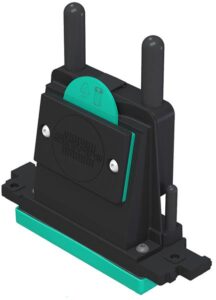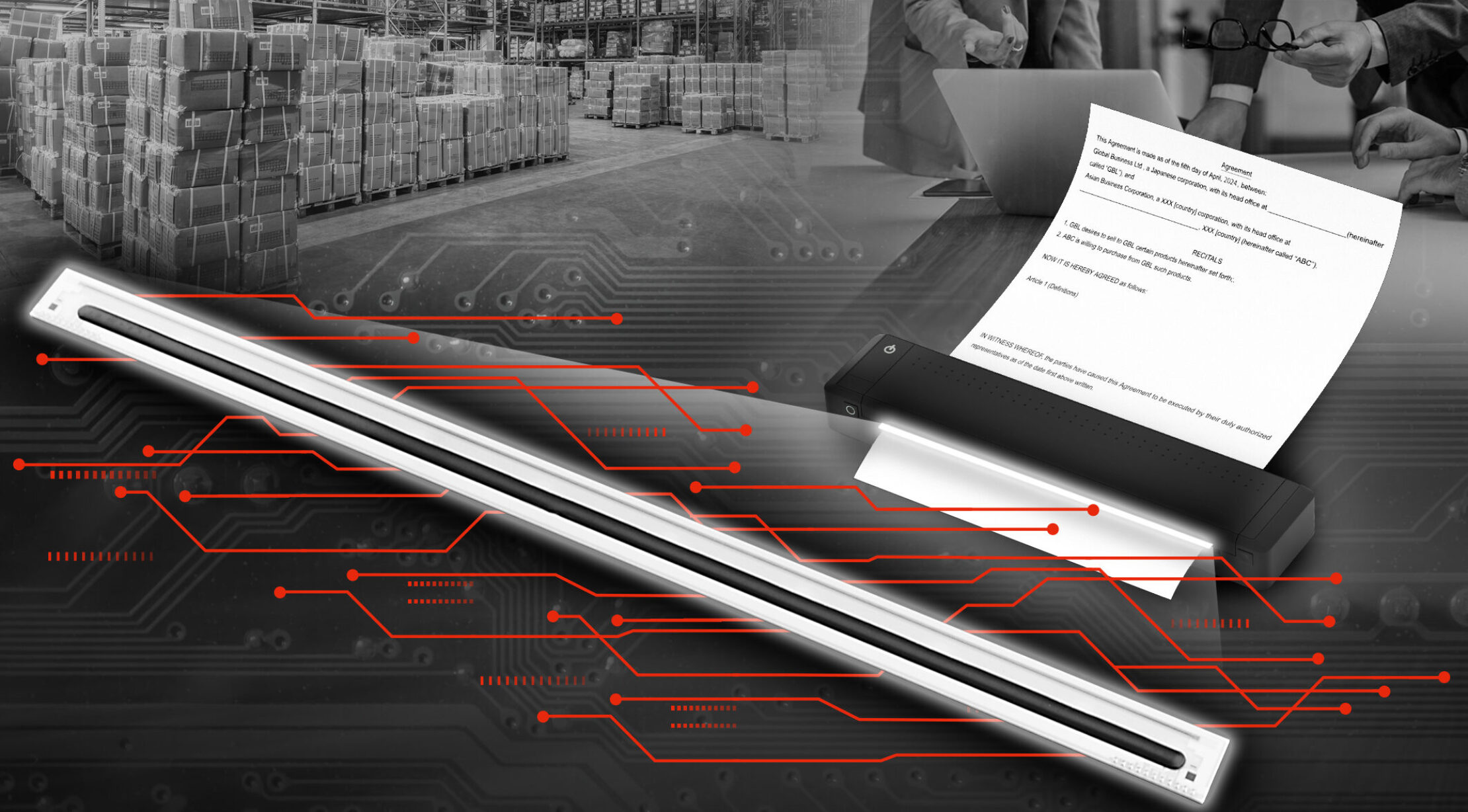Printheads are pivotal for print quality and productivity. Innovations like Fujifilm’s Dimatix SKYFIRE SF600 offer high resolution and speed, while Epson’s PrecisionCore technology focuses on accuracy and reliability. JBD’s MicroLED Printhead Module enhances laser printing efficiency, and ROHM Semiconductor’s thermal printheads deliver quality with lower power. These continuous advancements improve print speed, quality, and overall efficiency, driving the industry forward.
When a new printer is announced the market, much of the focus is on the capabilities of the machine and what it can produce. Be this its top printing speed, the type of material it can run, or even its maximum printing area, all of these are, of course, important to the buyer.
However, less is said about one of the key parts of the machine: printheads. While they may be mentioned in passing, they rarely feature in trade press headlines or in the key points of the machine, despite the import role they play in printed applications. To put it simply, the printhead will dictate the quality of prints you produce on the machine.
With this in mind, we cast an eye over recent developments with printheads and speak with the innovators involved to find out how these advancements can support print companies.
Commitment to innovation
Up first is Fujifilm, which last year introduced the Dimatix SKYFIRE SF600 inkjet printhead. A new head, the innovation leverages the Dimatix proprietary piezoelectric inkjet technology, based on silicon Micro Electro-Mechanical Systems (Si-MEMS) fabrication techniques.

Caption: Fujifilm introduced the Dimatix SKYFIRE SF600 inkjet printhead last year
The head delivers 600dpi resolution with drop size range of 5-25pL and nozzle layout that Fujifilm said enables high throw distance to meet a wide range of applications. It is equipped with an integrated trimming heater and temperature sensor, as well as REDIJET, coating, for what the manufacturer said delivers optimal use of aqueous and UV inks.
Additional features include a high-speed jet design, with noise dampening technology and dual recirculation supporting jetting at high speeds, while the printhead can jet 11 grams of ink per square metre per colour at over 130 metres per minute with four levels of grayscale.
Steve Billow, president and CEO of Fujifilm Dimatix, said the head reflects the manufacturer’s commitment to the transition from analogue to digital inkjet printing.
“Our customers require printheads that can withstand a wide variety of inks and print at high speeds while offering high quality and durability,” he said. “The unique design and features of the Dimatix SKYFIRE SF600 underscore our continued commitment to innovation, and provides reliable, high-quality sustained printing to enhance productivity in a wide range of applications.”
Optimising performance
Meanwhile, Jessica Shorten Hood, product manager C&I at Epson, offered insight into the manufacturer’s latest developments. She said the company has recently made significant advancements in its PrecisionCore printhead technology, continuing to build on its core strength in piezoelectric inkjet innovation.
 Caption: Jessica Shorten Hood, product manager C&I at Epson, said the company has made significant advancements in its PrecisionCore printhead technology
Caption: Jessica Shorten Hood, product manager C&I at Epson, said the company has made significant advancements in its PrecisionCore printhead technology
“Our latest developments are focused on optimising nozzle architecture and ink flow control to deliver even greater accuracy and reliability at industrial print speeds,” Hood said. “This results in sharper detail, smoother gradations, and higher colour accuracy across a wide range of substrates.
“We’ve also advanced our approach to self-monitoring and maintenance within the heads themselves, minimising downtime and reducing manual intervention. All of this is backed by continued investment in scalable printhead design, enabling both high-volume and high-mix production environments to benefit from the same trusted Epson technology.”
Looking ahead, Hood said that Epson is focused on continuing to advance its printhead technology to meet the evolving needs of the print market. She said its ongoing research is centred around improving print speed, precision, and durability, while enhancing the environmental sustainability of our products.
“One example of this is through supporting our customers and partners with a CO₂ calculator,” she said. “We are exploring new ways to optimise ink delivery and reduce waste, alongside innovations in self-diagnostic features that further minimise downtime and simplify maintenance for our customers.
“As print businesses face increasing demand for short turnaround times and diverse application requirements, the ability to deliver precision at speed becomes critical. Our latest printhead improvements are designed to meet these demands, with robust performance across long production runs and minimal degradation over time.”
Laser focused
Another recent innovation is the new MicroLED Printhead Module from JBD, for use in laser printing. With a minimalist configuration, consisting of a single row of MicroLED pixel arrays and a cylindrical lens array, the manufacturer said the elimination of mirrors, mechanical reflectors, and diffusion lenses commonly associated with laser modules substantially reduces space requirements.
Supporting 1200dpi resolution, the module leverages precise spot-control and multiple grey-level technologies to render what MicroLED described as “crisp text and richly detailed images”.
“Capitalising on small pixel sizes, the technology roadmap for MicroLED printheads may even extend to 2400 or 4800dpi, satisfying specialized demands for ultra-high-definition printing,” MicroLED said.
Other points include lower energy usage when compared to traditional laser modules, while the MicroLED, the manufacturer said, allow for faster printing than older modules.
It said: “A laser module’s exposure operates in a zero-dimensional manner, where a mechanical scanner exposes one point at a time, limiting speed by mechanical rotation. By contrast, the MicroLED module uses a one-dimensional approach. A linear LED array exposes an entire row in one go, and the rapid switching of LEDs significantly boosts printing efficiency, saving users valuable time.
“MicroLEDs also offer stable performance, with a T95 operating life of up to 1,000 hours. Featuring a solid-state structure without mechanical parts, the printhead module avoids the common wear and tear and mechanical failures of laser modules, reducing potential maintenance expenses. These characteristics not only illustrate the long-term economic benefits of the MicroLED Printhead Module but also provide end manufacturers with a more dependable solution.”
Smaller format
Also bringing new innovations to the market is ROHM Semiconductor, which earlier this year announced the KA2008-B07N70A thermal printhead. The company said that this has been designed to deliver high print quality with low power consumption and optimised for A4 size printers, up to 210mm wide.
 Caption: ROHM Semiconductor this year announced the KA2008-B07N70A thermal printhead for A4 mobile printers
Caption: ROHM Semiconductor this year announced the KA2008-B07N70A thermal printhead for A4 mobile printers
“Height has been reduced by approximately 16% from the conventional 14mm to 11.67mm, contributing to a more compact printer design,” ROHM said. “Moreover, optimising the heating element structure while improving the driver IC and wiring layout enables the support for 7.2V operation, reducing the applied energy required for printing by approximately 66% compared to conventional 12V drive.
“Adjustments to the individual wiring of resistive elements ensure uniform heat generation, stabilising print quality and enabling sharp and high-resolution 203dpi printing, even at speeds up to 100mm/s.”
Also recent from ROHM is the KR2002-Q06N5AA thermal printhead, which was introduced last year. Compatible with single Li-ion battery cell battery drive, the manufacturer said this achieves high performance printing while improving energy savings by approximately 30%.
It appears printhead development will never cease. Manufacturers continue to react to the changing demands of the market and release new innovations to help printing companies around the world deliver higher quality print at a faster rate. Keep an eye out for further innovations to ensure your systems are up to date and taking advantage of these latest advancements.
